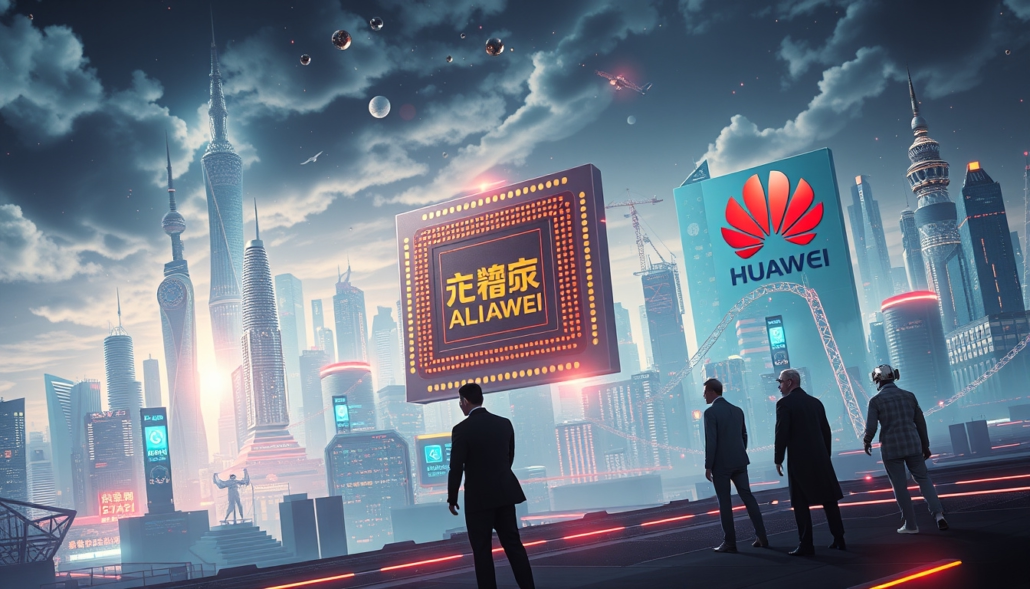China Escalates Chip War Amid Trade Tensions: Alibaba and Huawei Set to Dominate Domestic AI Chip Market
September 18, 2025 — China pushes its chip battle against the United States as trade talks stall. Beijing cuts ties with US tech by stopping Nvidia AI chip sales. It backs home-grown makers like Alibaba and Huawei to build a local chip system.
US-China Trade Talks Hit Roadblock in Madrid
US Treasury head Scott Bessent met China’s lead negotiator Li Chenggang in Madrid. They sat together and talked. No major deal came out of their meeting on September 16. The two sides did arrange for TikTok to shift to American control. Trade talks, however, remain stuck. US tariffs on Chinese goods continue through at least the end of 2025. Beijing sees strain on its economy as a result.
Worsening Economic Indicators Signal Headwinds
Exports in China slow sharply. Growth drops from 7.2% in July to 4.4% in August. External demand falls. Private company indexes also show strain. Firms face rising costs and must cut selling prices. Lower margins force many firms to cut jobs for the fifth month in a row. Overall unemployment ticks up from 5.2% in July to 5.3% in August. Youth unemployment for ages 16-24 reaches 18.9%, a high since December 2023. Retail sales slow too. In August, sales rose just 3.4% compared to 6.4% earlier in the year.
Beijing’s Strategic Escalation in the Chip Sector
China’s tech authority orders its biggest firms to stop buying Nvidia chips. The ban halts new orders and cancels existing ones. This step extends earlier restrictions on select Nvidia items. It shows China’s intent to build its own chip supply line for AI use. The market feels this move. Nvidia shares drop 2.62% on September 17 against the Nasdaq Composite’s slight 0.33% fall. Analysts note that this choice may take away $100 billion from Nvidia’s market value.
Alibaba and Huawei Poised to Capitalize
The chip ban turns the spotlight on local companies. Alibaba wins a key deal with China Unicom, the country’s second-biggest wireless provider, to use its own T-Head AI chips. The firm invests about 380 billion yuan ($53.5 billion) over three years to build its AI and chip system. Its stock rises over 5% on September 17 and climbs to a 98% increase for the year, far outpacing Nvidia’s 26.8% gain in the same period.
Huawei also steps up. It plans to launch the Ascend 950PR chip in the fourth quarter of 2026, with more chips to come until 2028. The company builds its reputation in home-grown AI hardware.
Market Reactions and Broader Implications
Mainland Chinese stocks gain strength in 2025. The CSI 300 and Shanghai Composite go up by 15.8% and 16.1%, just ahead of the Nasdaq Composite’s 15.3% rise. Hong Kong’s Hang Seng leads with a 34% jump for the year. Market risks still remain. Trade tensions continue, housing shows signs of weakness, and pressure on profit margins and job reductions add to worries. These factors may slow down household spending and growth further.
Outlook and Strategic Considerations
Some experts keep a hopeful view. Goldman Sachs has raised its China 2025 GDP forecast from 4.6% to 4.8%. This hope rests on a push for more fiscal support in job and housing areas. China’s growing role in AI investment and chip building now sets its path toward tech independence amid ongoing US-China rivalry. Local companies like Alibaba and Huawei now lead China’s chip scene. Their move may shift the global balance in semiconductor production.
This report will be updated as developments in US-China ties and China’s semiconductor scene continue to change.
Full money-growing playbook here:
youtube.com/@the_money_grower
